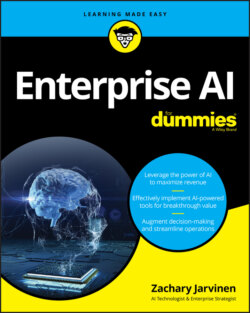Читать книгу Enterprise AI For Dummies - Zachary Jarvinen - Страница 56
Healthcare
ОглавлениеIt’s hard to find an industry more bogged down in data than healthcare. With the advent of the electronic health record, doctors often spend more time on paperwork and computers than with their patients.
In a 2016 American Medical Association study, doctors spent 27 percent of their time on “direct clinical face time with patients” and 49 percent at their desk and on the computer. Even worse, while in the examination room, only 53 percent of that time was spent interacting with the patient and 37 percent was spent on the computer.
A 2017 American College of Healthcare study found that doctors spend the same amount of time focused on the computer as they do on the patients.
A 2017 Summer Student Research and Clinical Assistantship study found that during an 11-hour workday, doctors spent 6 of those hours entering data into the electronic health records system.
The good news is that AI is changing that equation. Healthcare is a data-rich environment, which makes it a prime target for AI:
Natural-language processing can extract targeted information from unstructured text such as faxes and clinical notes to improve end-to-end workflow, from content ingestion to classification, routing documents to the appropriate backend systems, spotting exceptions, validating edge cases, and creating action items.
Data mining can accelerate medical diagnosis. In a 2017 American Academy of Neurology study, AI diagnosed a glioblastoma tumor specimen with actionable recommendations within 10 minutes, while human analysis took an estimated 160 hours of person-time.
Artificial neural networks can successfully triage X-rays. In a 2019 Radiology Journal study, the team trained an artificial neural network model with 470,300 adult chest X-rays and then tested the model with 15,887 chest X-rays. The model was highly accurate, and the average reporting delay was reduced from 11.2 to 2.7 days for critical imaging findings and from 7.6 to 4.1 days for urgent imaging findings compared with historical data.
Speech analytics can identify, from how someone speaks, a traumatic brain injury, depression, post-traumatic stress disorder (PTSD), or even heart disease.
